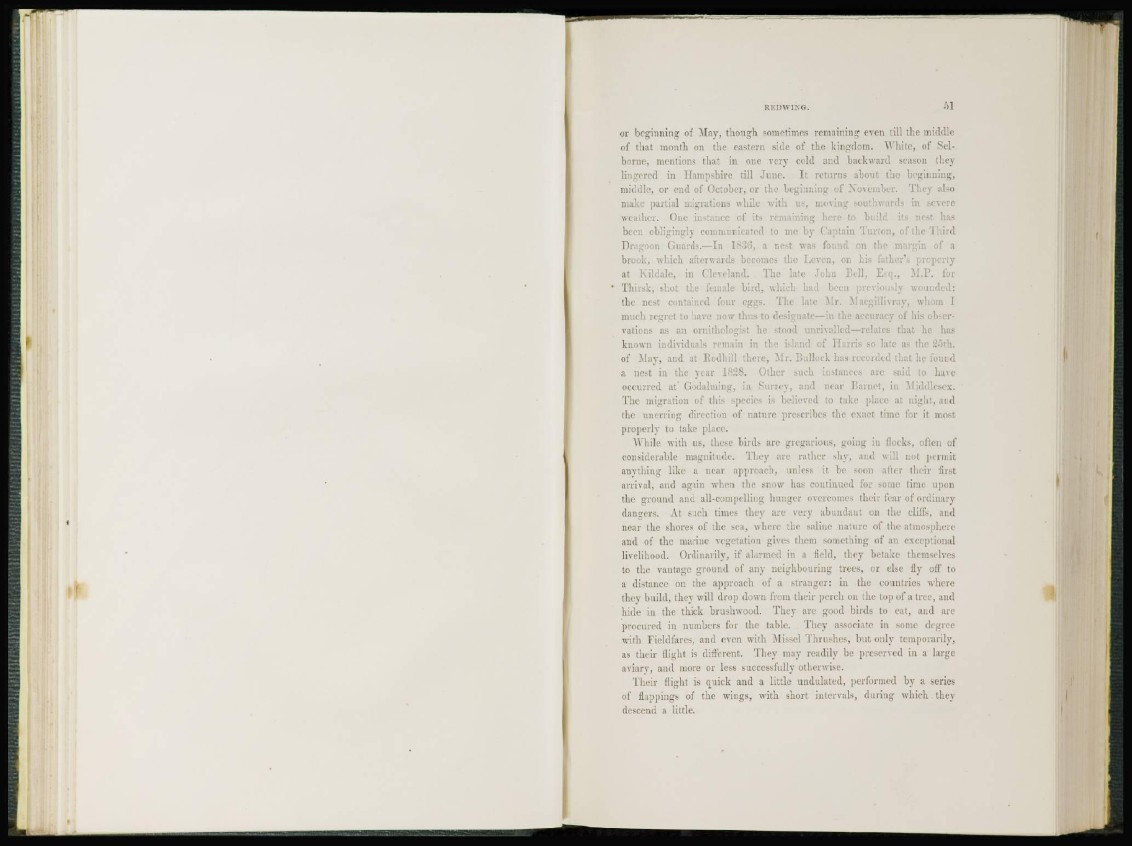
REDWING. 5]
or beginning of May, though sometimes remaining even lili the middle
of that month on the eastern side of the kingdom. White, of Selborne,
mentions that in one very cold and backward season they
lingered in Hampshire till June. It returns about the beginning,
middle, or end of October, or the beginning of November. They also
make partial migrations while with us, moving southwards in severe
weather. One instance of its remaining here to build its nest has
been obligingly communicated to me by Captain Turton, of the Third
Dragoon Guards.—In 1836, a nest was found on the margin of a
brook, which afterwards becomes the Leven, on his father's property
at Kildale, in Cleveland. The late John Bell, Esq., M.P. for
Thirst; shot the female bird, which had been previously wounded:
the nest contained four eggs. The late Mr. Macgillivray, whom I
much regret to have now thus to designate—in the accuracy of his observations
as an ornithologist he stood unrivalled—relates that he has
known individuals remain in the island of Harris so late as the 20th.
of May, and at liodhill there, Mr. Bullock has recorded that he found
a nest in the year 18:28. Other such instances are said to have
occurred at Godalming, in Surrey, and near Barnet, in Middlesex.
The migration of this species is believed to take place at night, and
the unerring direction of nature prescribes the exact time for it most
properly to take place.
While with us, these birds arc gregarious, going in flocks, often of
considerable magnitude. They are rather shy, and will not permit
anything like a near approach, unless it be soon after their first
arrival, and again when the snow has continued for some time upon
the ground and all-compelling hunger overcomes their fear of ordinary
dangers. At such times they arc very abundant on the cliffs, and
near the shores of the sea, where the saline nature of the atmosphere
and of the marine vegetation gives them something of an exceptional
livelihood. Ordinarily, if alarmed in a field, they betake themselves
to the vantage ground of any neighbouring trees, or else fly off" to
a distance on the approach of a stranger: in the countries where
they build, they will drop down from their perch on the top of a tree, and
hide in the thick brushwood. They are good birds to eat, and are
procured in numbers for the table. They associate in some degree
with Fieldfares, and even with .Missel Thrushes, but only temporarily,
as their flight is different. They may readily be preserved in a large
aviary, and more or less successfully otherwise.
Their flight is quick and a little undulated, performed by a series
of flappings of the wings, with short intervals, during which they
descend a little.